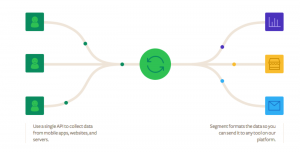To Automate — Or Not To Be?
Personnel costs are one of the few big variable line items on a P&L — unlike, for instance, rent. So if headcount can be reduced while improving results, it’s usually a good business decision to adopt technologies that take the place of people.
Aside from performing faster, cheaper and better, a machine complains very little about difficult work conditions, can always work through holidays and weekends, and requires no health insurance.
However, there are a number of obstacles to pulling the trigger on this kind of strategy, mostly having to do with human reservations.
Let’s face it, we’re bothered by the idea of displacing people with technology — especially if the ones being displaced are ourselves.
In the marketing business, people are often asked to evaluate technologies that automate tasks performed by themselves, the evaluators and managers of those tasks. That creates a conflict between what is good for the business and what is good for the people employed to do the work.
In the case of agencies that charge for manual labor, greatly improved efficiencies might translate to lowered revenues.
Others simply believe that manual work will produce better results, or at least just as good as the automated. They believe there are tasks that call for reasoning and a nuanced approach only humans can provide. The machine can make numerical calculations much faster, but only within a limited set of parameters.
This may sound right, but in an increasing number of scenarios, computers demonstrate better judgement than humans in making complex decisions that require synthesizing disparate data sources.
AI-based algorithms can consider many data sets in the same way humans try to incorporate all decisioning factors. However, a machine can ingest way more data than a human is able to carefully consider, so its recommendations are better supported with data, and as the algorithms learn, they become more accurately predictive over time.
Consider Alpha Go, the computer program developed by Alphabet Inc.’s Google DeepMind to beat the world champion of the Chinese game of strategy, Go. Because Go is complex and requires thinking about what an opponent might do, it was believed an algorithm would not be able to beat professional players of the game. However, the development team created an AI-based algorithm to learn from every game and move ever played in Go so that it could accurately predict the best move in every situation. It beat the world champ handily.
The next automated Go player created by Google DeepMind was Alpha Go Zero, which took human players entirely out of the equation. Starting from scratch, Alpha Go Zero continuously improved by playing every possible combination of the game indiscriminately, even making moves that seemed to make no sense until about 40 moves later, something that human players and Alpha Go wouldn’t have the ability to foresee. Alpha Go Zero beat Alpha Go 100 games to 0, and became the new Go champ because it operates free of human biases and messy errors.
I recently invested in an AI-based media planning technology called Elsy, which was designed to create a media plan and predict ROI against each specific media allocation. It ingests all the same data that a media planner considers, including Nielsen, comScore, competitive data and attribution measurements.
A human planner still provides campaign input to Elsy, such as budget, audience segments, and fixtures on the schedule such as an upfront buy, so it is not completely autonomous. But the time needed to produce a plan is reduced five- or sixfold. And all recommendations are numerically supported with the ROI to be expected against each element of the plan. Importantly, Elsy gets smarter over time about predicting outcomes and reports back on the accuracy of its predictions.
Some may question whether the Elsy capability is actually better than its human counterparts. Some may not want that to be so. But I believe those who ignore this kind of automation do so at their own peril, opening the door for their competition.
Like it or not, technology is bringing change to processes and methods ingrained in the media industry — and those actively looking for more ways to automate will be the businesses that survive and thrive.
(87)
Report Post





